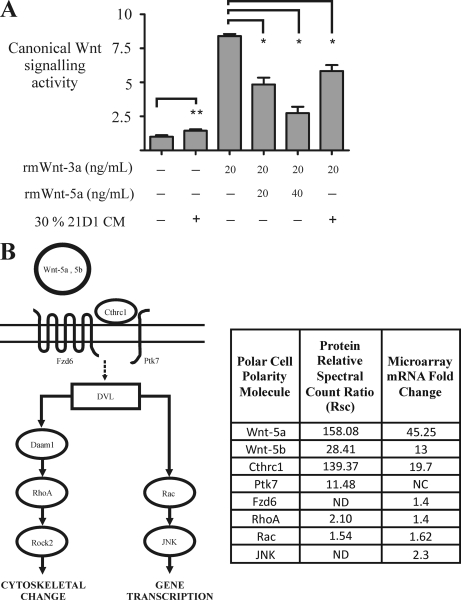Fig. 5.
Wnt-5a expression during EMT represses canonical Wnt signaling. A, canonical Wnt signaling activity was examined using the T-cell factor-luciferase reporter assay under different culture conditions. 21D1 cells cultured in 30% conditioned medium (CM) showed no significant change (**) in canonical Wnt signaling activity. Addition of rm Wnt-3a stimulates canonical Wnt signaling; however, this activity is significantly (*) repressed following the addition of 20 ng/ml and to a greater extent by 40 ng/ml recombinant Wnt-5a. In a similar fashion, addition of 30% conditioned medium from 21D1 cells significantly attenuates canonical Wnt signaling (n = 2). Error bars represent mean ± S.D. Significance is determined by a p value ≤0.05 using the Student's t test. B, the non-canonical Wnt signaling PCP pathway may be activated during Ras/TGF-β-induced EMT. Several upstream components, core components, downstream effectors, and PCP modulators were revealed to be up-regulated in our integrated proteomics and transcriptomics EMT studies. Cthrc1, collagen triple helix repeat-containing protein 1; Fzd6, frizzled 6; Ptk7, tyrosine-protein kinase 7; DVL, dishevelled; ND, not detected; NC, no change. Pathway interactions are based on information obtained from the Kyoto Encyclopedia of Genes and Genomes database (http://www.genome.jp/kegg/pathway.html).

